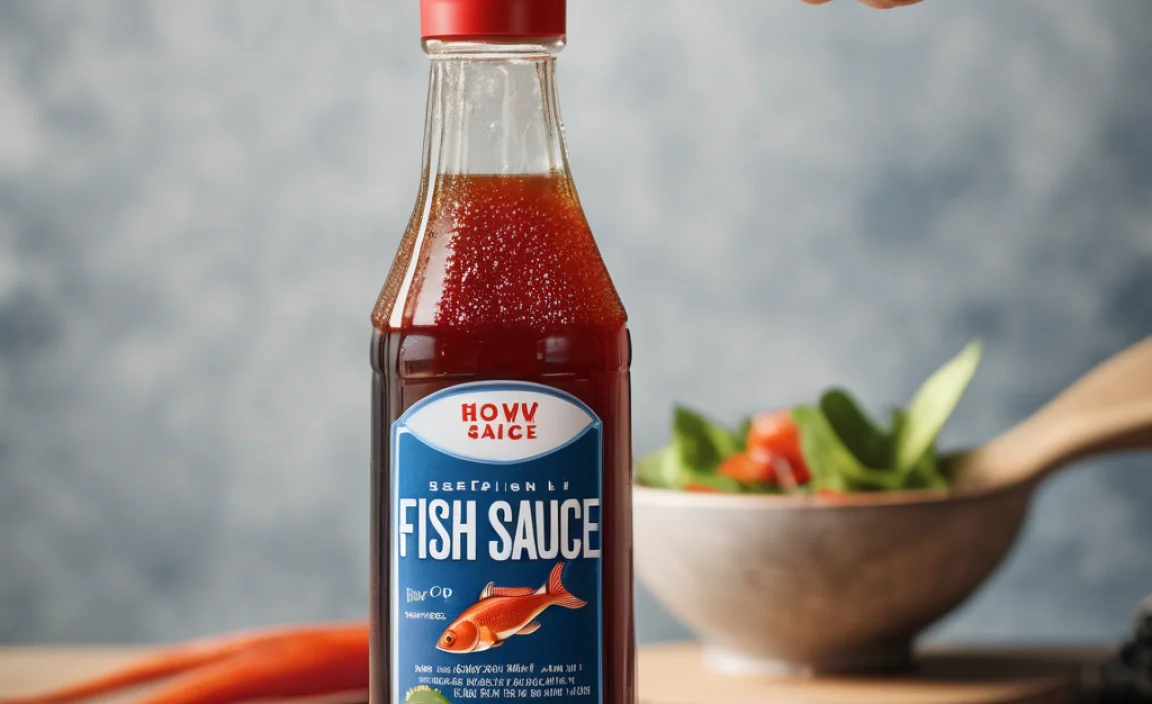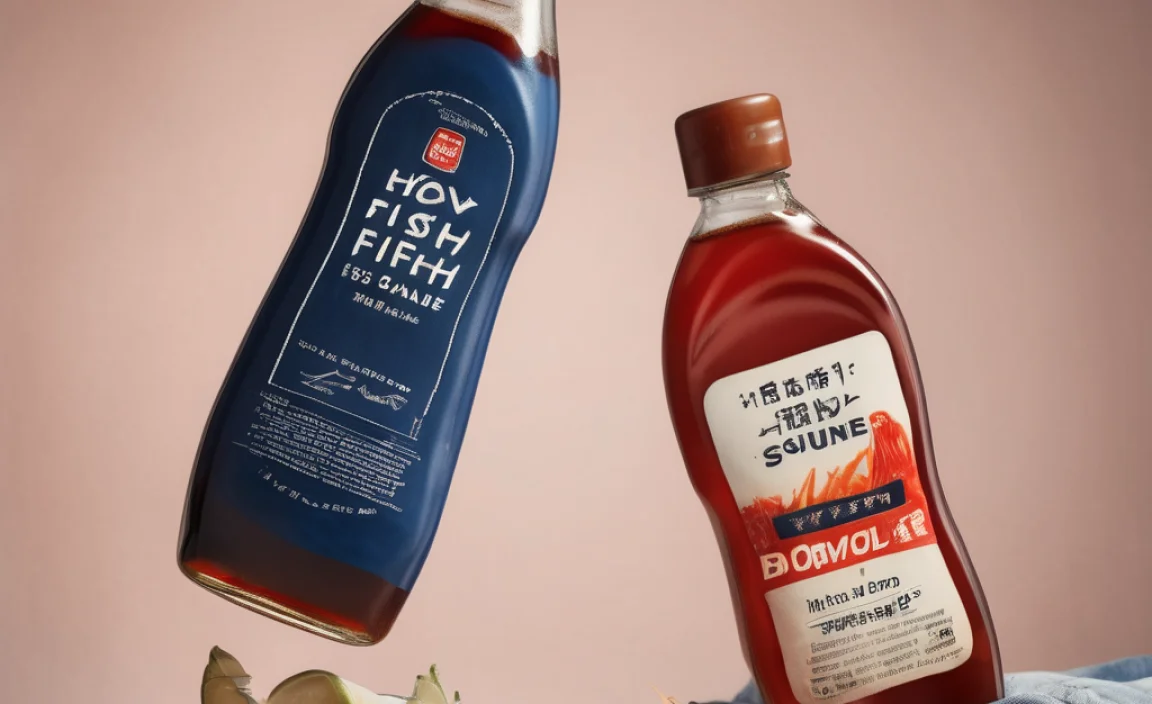Is your favorite denim smelling like fish sauce? Don’t worry! You can easily remove fish sauce odors from your jeans with simple household items and a few straightforward steps. This guide provides a clear, fact-based solution to restore your denim’s freshness and keep them looking and smelling great.
Oh, the dreaded fish sauce stain! That potent, savory ingredient that elevates so many dishes can, unfortunately, leave its lingering aroma on your favorite pair of jeans. Whether it was a splash during cooking, an accidental spill at the dinner table, or just general proximity to a culinary adventure, the smell of fish sauce can be stubborn. It’s a common frustration for anyone who loves both good food and good denim. But before you relegate those beloved jeans to the back of the closet, know this: you absolutely can tackle this. This guide is here to walk you through effective, easy-to-follow methods to banish that fishy smell for good. We’ll break down exactly what you need and how to use it, so you can get back to enjoying fresh, clean denim without any lingering odors.
Understanding the Fish Sauce Odor Problem

Fish sauce is a fermented product, typically made from anchovies and salt. This fermentation process creates complex compounds, including amines, which are responsible for its strong, distinctive smell. When fish sauce encounters fabric like denim, these compounds can bind to the fibers. Denim, with its tightly woven cotton structure, can hold onto odors more tenaciously than smoother fabrics. The smell itself is often described as pungent, ammonia-like, or, well, fishy. It’s not just about the initial smell; it’s about how effectively those odor-causing molecules penetrate and adhere to the fabric’s surface and within its weave.
Why is it so challenging to remove? Unlike a simple dirt smudge, odor molecules are microscopic and can be deeply embedded. Water alone often isn’t enough to break these bonds. Furthermore, heat can sometimes “set” odors, making them even harder to remove later. This knowledge is key to choosing the right approach and avoiding methods that might inadvertently make the problem worse.
Pre-Treatment: Your First Line of Defense

Before diving into washing, a little pre-treatment can go a long way in loosening the odor molecules and preparing your denim for a thorough clean. This step is crucial, especially for strong or lingering smells. Think of it as softening up the stubborn odor before the main attack.
Gather Your Tools
For effective pre-treatment, you’ll want a few common household items:
- A clean spray bottle
- White vinegar
- Baking soda
- Cold water
- A soft cloth or sponge
The Pre-Treatment Steps
Let’s get those jeans ready for a deep clean:
- Airing Out: If possible, hang the affected jeans outdoors. Natural airflow is the simplest first step. Sometimes, just letting them air out for a day in fresh air can significantly reduce the smell.
- Vinegar Spray: Mix a solution of equal parts white vinegar and cold water in your spray bottle. Lightly spray the affected area of the denim. You don’t want to soak it, just create a damp surface. Vinegar is acidic and helps to neutralize alkaline odor compounds.
- Baking Soda Paste: In a small bowl, mix baking soda with a little cold water to form a paste. Apply this paste directly onto the areas where the fish sauce smell is strongest. Baking soda is a natural deodorizer that absorbs odors effectively.
- Dwell Time: Let the vinegar spray and baking soda paste sit for at least 15-30 minutes. For tougher odors, you can leave it for a couple of hours.
- Gentle Blotting: Use a damp cloth or sponge to gently blot the treated areas. This helps to lift some of the loosened odor molecules from the fabric surface. Avoid vigorous scrubbing, which can push the odor deeper or damage the denim fibers.
Washing Methods: Bringing Out the Big Guns

Once pre-treated, it’s time for the washing process. The key here is to use the right temperature, the right detergent, and potentially an extra boost for stubborn smells. For light wash jeans, it’s always wise to be a bit gentler to avoid color fading or damage.
Choosing Your Wash Cycle and Temperature
The goal is to use a wash that’s effective at removing odors without being too harsh on light-wash denim.
- Cold Water Wash: Always opt for a cold water wash for light-wash jeans, especially when dealing with odors. Hot water can sometimes set stains and smells deeper into the fabric, and it can also cause fading in lighter denims. Cold water is gentler on the fibers and less likely to exacerbate the problem.
- Gentle Cycle: Use the “gentle” or “delicates” cycle on your washing machine. This provides enough agitation to clean the fabric thoroughly but is less aggressive than a standard or heavy-duty cycle, protecting the dye and integrity of your jeans.
Adding Deodorizing Boosters to Your Wash
Standard laundry detergent might not be enough. Incorporating these boosters can significantly enhance odor removal:
Option 1: Vinegar Boost
White vinegar can work wonders in the wash cycle. It helps to break down odor-causing bacteria and neutralize smells.
- Add 1 cup of white vinegar directly into the washing machine drum along with your jeans. Do not put it in the fabric softener dispenser, as it might get rinsed out too quickly.
- Run your jeans through the cold, gentle cycle as usual.
Option 2: Baking Soda Boost
Baking soda is another excellent natural deodorizer that can be added to your laundry.
- Add 1/2 to 1 cup of baking soda directly into the washing machine drum with your jeans.
- Wash on a cold, gentle cycle.
Option 3: Combined Approach (for extra tough odors)
If the smell is particularly persistent, you can combine the pre-treatment with the washing boosters.
- Complete the pre-treatment steps (vinegar spray and baking soda paste) as outlined previously.
- After the dwell time for the pre-treatment, wash the jeans in cold water on a gentle cycle.
- Add 1 cup of white vinegar alongside your jeans in the drum. You can also add 1/2 cup of baking soda to the detergent dispenser.
Detergent Considerations
When choosing a detergent, opt for one that is specifically designed for odor removal or is a high-quality, enzyme-based detergent. Enzymes can break down organic molecules that cause smells. Avoid fabric softeners during this odor-removal wash, as they can coat the fibers and trap residual odors.
Dealing with Very Stubborn Odors: Advanced Techniques

Sometimes, despite your best efforts, a faint whiff of fish sauce might linger. For these exceptionally stubborn cases, you might need to escalate your approach slightly. These methods are a bit more intensive but can be very effective.
Soaking with Vinegar or Baking Soda
A long soak can help to thoroughly infuse the denim fibers with deodorizing agents.
- Fill a clean basin, bucket, or bathtub with cold water.
- Add 1-2 cups of white vinegar OR 1 cup of baking soda to the water and stir to dissolve.
- Submerge your denim completely in the solution. Ensure it’s fully saturated.
- Let the jeans soak for at least 4-8 hours, or preferably overnight.
- After soaking, wring out the excess liquid and wash the jeans as usual in cold water on a gentle cycle, perhaps with an additional cup of vinegar in the wash.
Enzyme Cleaners
Enzyme cleaners are specifically designed to break down organic matter and odors. They are very effective against protein-based smells like those from fish sauce.
- Look for an enzyme cleaner formulated for laundry or pet odors. You can find these at most grocery or home goods stores. Check out reputable brands like a well-regarded brand for effective cleaning solutions.
- Follow the product’s instructions carefully. Typically, you’ll add a pre-measured amount to your wash cycle along with your regular detergent.
- Wash on a cold, gentle cycle.
Sunlight and Fresh Air (The Natural Deodorizer)
Don’t underestimate the power of nature!
- After washing, hang your denim outside in direct sunlight to dry.
- Sunlight has natural bleaching and deodorizing properties, and fresh air circulation can further help to dissipate any remaining odors.
- Ensure the jeans are completely dry before storing them.
Drying and Storage: Preventing Re-contamination

How you dry and store your jeans is just as important as how you wash them, especially after a rigorous odor-removal process. You want to avoid trapping any residual smells and prevent new odors from attaching.
Drying Tips
- Air Dry is Best: Whenever possible, air dry your jeans. Hang them on a sturdy hanger or drape them over a drying rack. This prevents the heat from a dryer from potentially setting any faint residual odors and is gentler on denim.
- Avoid High Heat in Dryers: If you must use a dryer, use the lowest heat setting possible or an air-only cycle. Check the jeans periodically to ensure they don’t start to smell musty.
- Complete Dryness: Make sure your jeans are completely dry before folding or storing them. Damp clothing can quickly develop mildew and new odors.
Storage Best Practices
- Clean Storage Area: Store your jeans in a clean, dry closet. Avoid storing them near strong-smelling items like mothballs or heavily scented laundry products.
- Airing Out Before Storage: If you’ve just washed them and they’re freshly dried, give them a final “airing” by hanging them in your closet for a day before folding.
- Avoid Plastic Bags: Don’t store denim in airtight plastic bags for long periods, as this can trap moisture and lead to mustiness.
What Not to Do
To ensure you’re not making the situation worse, here are a few things to avoid when trying to remove fish sauce odors from denim:
- Using Hot Water: As mentioned, hot water can “bake” odors into the fabric. Stick to cold or lukewarm at most.
- Harsh Scrubbing: Vigorous scrubbing can damage denim fibers and push odors deeper into the material.
- Bleach (on light wash jeans): While bleach is a powerful deodorizer, it can severely damage or discolor light-wash denim, leading to permanent yellowing or uneven fading.
- Fabric Softener (during odor removal wash): Fabric softeners can coat fibers and mask odors temporarily, but they can also prevent deeper cleaning and trap smells over time.
- Ironing Odors In: Avoid ironing the affected area before the odor is fully removed, as the heat can set the smell permanently.
Key Differences: Fish Sauce vs. Other Odors in Denim
While many odor removal techniques overlap, understanding the specific nature of fish sauce smell helps tailor your approach. Here’s a quick comparison:
| Odor Type | Composition | Typical Removal Approach | Denim Specifics |
|---|---|---|---|
| Fish Sauce | Fermented amines, ammonia compounds | Vinegar (acidic neutralization), Baking Soda (absorption), Enzymes (molecular breakdown) | Penetrates tightly woven fibers; best with cold water and gentle cycles to preserve light wash. |
| Mildew/Musty | Fungi, dampness | Vinegar, Baking Soda, extended sun drying, enzyme cleaners | Requires thorough drying; can indicate improper storage. |
| Sweat/Body Odor | Bacteria, organic acids | Enzyme cleaners, specialized laundry boosters, baking soda | Can be pervasive; often requires an enzyme cleaner for complete elimination. |
| Grease/Oil | Lipids | Dish soap pre-treatment, hot water washes (if fabric allows), stain removers | May require specific degreasers; hot water generally safe for darker washes but not ideal for light wash odor removal. |
As you can see, fish sauce’s fermented nature means it benefits greatly from acidic neutralizers like vinegar and broad-spectrum deodorizers like baking soda. Enzyme cleaners are also incredibly effective because they target the organic compounds responsible for the smell at a molecular level.
FAQ: Your Denim Odor Questions Answered
Q1: How quickly can I expect the fish sauce smell to be gone?
With the pre-treatment and a good wash, most fish sauce smells disappear after one cycle. For very strong or old odors, it might take two washes or an overnight soak.
Q2: Will vinegar make my jeans smell like vinegar?
No, the vinegar smell dissipates completely during the rinse cycle and especially as the jeans dry. It acts as a deodorizer and its scent vanishes.
Q3: Can I use regular laundry detergent for this?
Yes, you can, but using a detergent with odor-fighting enzymes or a scent-neutralizing formulation will yield better results. Always use cold water.
Q4: What if the smell is still there after washing and drying?
If the smell persists, try a targeted soak (either overnight with vinegar or enzyme cleaner) followed by another wash. Ensure you are using cold water, a gentle cycle, and consider air-drying in direct sunlight.
Q5: Is it safe for light wash jeans specifically?
Yes, all the methods recommended here – cold water, vinegar, baking soda, and enzyme cleaners – are safe for light wash jeans when used as directed. Avoid chlorine bleach completely.
Q6: Can I use a fabric freshener spray?
Fabric freshener sprays from brands like Febreze can mask odors temporarily but don’t remove the source. For a lasting solution, it’s best to wash the jeans using the methods above.
Conclusion: Fresh Denim, No Fishy Business!
Dealing with a fish sauce odor on your favorite denim might seem daunting, but as we’ve explored, it’s a completely manageable issue with the right approach. By understanding the nature of the odor and employing simple, effective techniques like pre-treatment with vinegar and baking soda, washing with cold water and deodorizing boosters, and proper drying, you can restore your jeans to their fresh, clean state. Remember to be patient, especially with stubborn smells, and avoid common pitfalls like hot water or harsh chemicals that can damage your light-wash denim. With these practical, fact-based steps, you can confidently tackle any fish sauce mishap and keep your wardrobe smelling fantastic. Enjoy your revitalized, odor-free jeans!











